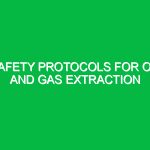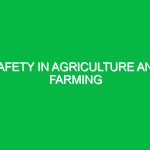In the complex world of Health, Safety, and Environment (HSE), the term “Advanced Risk Assessment Techniques” encompasses a variety of methods designed to systematically identify, evaluate, and prioritize risks associated with workplace hazards. These techniques go beyond traditional risk assessment methods, integrating sophisticated tools and approaches that enhance decision-making processes and ultimately contribute to safer working environments. As industries evolve and face new challenges, the relevance of these advanced techniques cannot be overstated. They not only comply with regulations but also safeguard personnel, assets, and the environment.
Understanding Advanced Risk Assessment Techniques
At its core, advanced risk assessment involves a comprehensive analysis of potential hazards and risks, utilizing data-driven insights and innovative methodologies. Unlike basic risk assessments that might focus solely on obvious hazards, advanced techniques delve deeper into complex scenarios, accounting for varying factors and potential interactions. For instance, a chemical manufacturing facility might use advanced simulations to predict the impact of a spill under different environmental conditions, rather than merely identifying the chemicals involved.
One of the most significant aspects of advanced risk assessment techniques is their adaptability. They can be tailored to specific industries, such as construction, healthcare, or manufacturing, making them relevant across diverse sectors. By leveraging technology, organizations can enhance their assessments through the integration of artificial intelligence, machine learning, and big data analytics, which allow for real-time risk evaluation and management.
Identifying Potential Hazards and Risks
When discussing advanced risk assessment techniques, it is crucial to identify the various hazards that can impact health, safety, and the environment. These hazards can be categorized into several types:
1. Physical Hazards
Physical hazards include conditions that can cause harm or injury to employees, such as machinery, falls, or exposure to extreme temperatures. Advanced techniques involve detailed site assessments, often utilizing 3D modeling to visualize potential hazards in the workspace. For example, a construction site might employ drones to survey high-risk areas, identifying potential fall risks before work begins.
2. Chemical Hazards
In environments where chemicals are present, understanding the properties and potential reactions of these substances is vital. Advanced techniques may include quantitative risk assessment (QRA) models that calculate the likelihood and consequences of chemical exposure. Through historical data and predictive modeling, organizations can assess the potential impact of chemical spills or leaks more accurately.
3. Biological Hazards
Biological hazards stem from exposure to harmful biological agents, such as bacteria or viruses. Advanced risk assessments can involve statistical modeling to predict outbreak scenarios, particularly in healthcare settings. For instance, during the COVID-19 pandemic, many hospitals used predictive analytics to assess the risk of virus transmission based on various factors, such as patient density and staff interactions.
4. Ergonomic Hazards
Improper workplace design can lead to musculoskeletal disorders and other injuries. Advanced ergonomic assessments often incorporate motion capture technology and virtual reality to observe and analyze worker movements, identifying risks that may not be evident through traditional assessments. This approach allows organizations to design interventions that improve worker comfort and safety.
5. Psychological Hazards
Psychological hazards are increasingly recognized as significant risks in the workplace. Techniques such as surveys and focus groups can gather data on employee stress levels and mental health, while advanced analytics can identify patterns that may indicate a toxic work environment. Addressing these issues proactively can greatly enhance employee well-being and productivity.
Safety Precautions and Best Practices
Implementing advanced risk assessment techniques is only one part of the equation. It is equally important to establish comprehensive safety precautions and best practices to mitigate identified risks. Here are several actionable strategies:
1. Regular Training and Education
Ensuring that employees are well-trained in risk awareness and safety protocols is paramount. Regular workshops and safety drills can keep safety at the forefront of employees’ minds. For example, an oil and gas company may conduct emergency response drills that use virtual reality scenarios to prepare staff for potential hazards.
2. Continuous Monitoring and Feedback
Utilizing technology such as Internet of Things (IoT) devices can facilitate continuous monitoring of environmental conditions and equipment performance. Real-time data collection allows organizations to respond swiftly to emerging risks. For instance, sensors can detect gas leaks in a manufacturing plant, triggering immediate alerts and evacuation procedures.
3. Employee Involvement
Encouraging employee involvement in safety programs creates a culture of safety within the organization. Employees who feel empowered to voice concerns about potential hazards are more likely to report issues before they escalate. Implementing anonymous reporting systems can further enhance this process, allowing for candid discussions about risks.
4. Regular Review and Update of Risk Assessments
Advanced risk assessments should be living documents. As new processes, technologies, or regulations emerge, organizations must regularly update their assessments to reflect current realities. This approach ensures that risk management strategies remain effective and relevant.
5. Integration of Advanced Technologies
Incorporating technologies such as artificial intelligence and machine learning into risk assessments can provide deeper insights. For example, a manufacturing facility might use AI algorithms to predict equipment failures based on historical data, allowing for proactive maintenance and reducing downtime.
Regulations and Standards Governing Advanced Risk Assessment Techniques
In the realm of HSE, several regulations and standards guide the implementation of advanced risk assessment techniques. Understanding these regulations is essential for compliance and effective risk management:
1. OSHA Standards
The Occupational Safety and Health Administration (OSHA) sets forth standards that require employers to identify and mitigate workplace hazards. Specifically, OSHA’s General Duty Clause mandates that employers provide a safe working environment. Advanced risk assessments can help organizations meet these requirements more effectively.
2. ISO 45001
The ISO 45001 standard provides a framework for occupational health and safety management systems. It emphasizes the importance of risk assessment and encourages organizations to adopt proactive measures to prevent workplace injuries and illnesses. Advanced techniques align well with the ISO 45001 framework, enabling organizations to enhance their safety management practices.
3. EPA Regulations
The Environmental Protection Agency (EPA) governs environmental risks, particularly in industries that manage hazardous materials. Compliance with EPA guidelines often necessitates advanced risk assessment techniques to evaluate potential environmental impacts and ensure proper mitigation measures are in place.
Conclusion
Advanced risk assessment techniques are indispensable in the HSE domain, providing organizations with the tools they need to identify, evaluate, and manage risks effectively. By embracing these techniques, industries can foster safer workplaces, protect employees, and comply with regulatory standards. As technology continues to evolve, so too will the methods we use to assess risk, allowing for even more sophisticated approaches to safety and health management. Ultimately, the goal remains the same: to create a safer, healthier environment for everyone involved.


